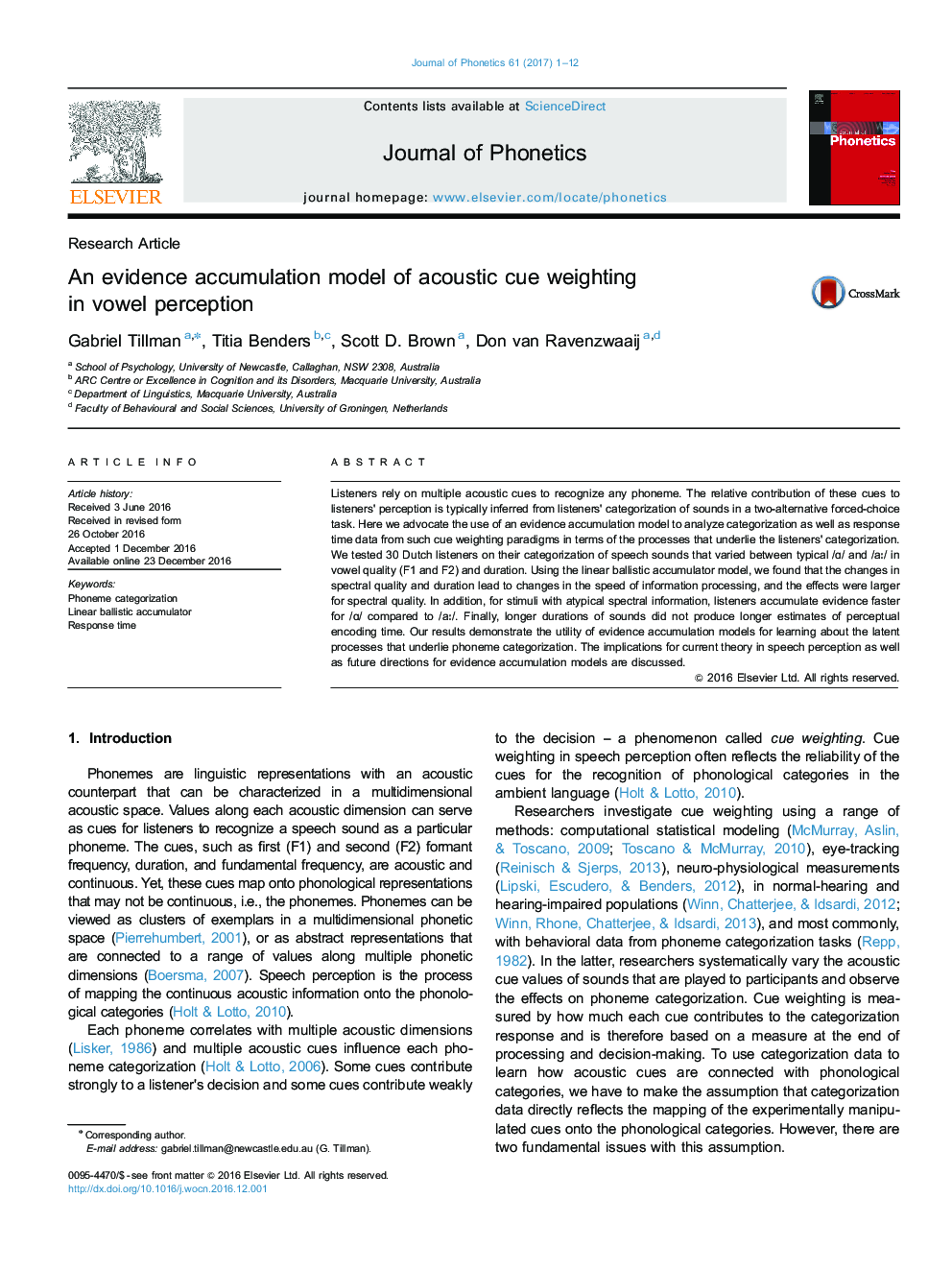| Article ID | Journal | Published Year | Pages | File Type |
|---|---|---|---|---|
| 5124096 | Journal of Phonetics | 2017 | 12 Pages |
â¢LBA model of speech perception simultaneously analyzes categorization and RT.â¢Models latent processes in categorical decision making from acoustic information.â¢Dutch listeners weigh spectral quality over duration in vowel perception.â¢The cue weighting is driven by speed of processing of cues, not by timing of cues.â¢The model disentangles processing of cues for each vowel in the contrast.
Listeners rely on multiple acoustic cues to recognize any phoneme. The relative contribution of these cues to listeners׳ perception is typically inferred from listeners׳ categorization of sounds in a two-alternative forced-choice task. Here we advocate the use of an evidence accumulation model to analyze categorization as well as response time data from such cue weighting paradigms in terms of the processes that underlie the listeners׳ categorization. We tested 30 Dutch listeners on their categorization of speech sounds that varied between typical /É/ and /aË/ in vowel quality (F1 and F2) and duration. Using the linear ballistic accumulator model, we found that the changes in spectral quality and duration lead to changes in the speed of information processing, and the effects were larger for spectral quality. In addition, for stimuli with atypical spectral information, listeners accumulate evidence faster for /É/ compared to /aË/. Finally, longer durations of sounds did not produce longer estimates of perceptual encoding time. Our results demonstrate the utility of evidence accumulation models for learning about the latent processes that underlie phoneme categorization. The implications for current theory in speech perception as well as future directions for evidence accumulation models are discussed.
